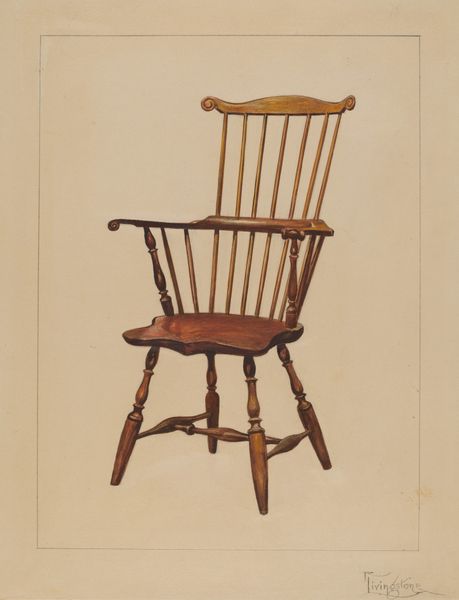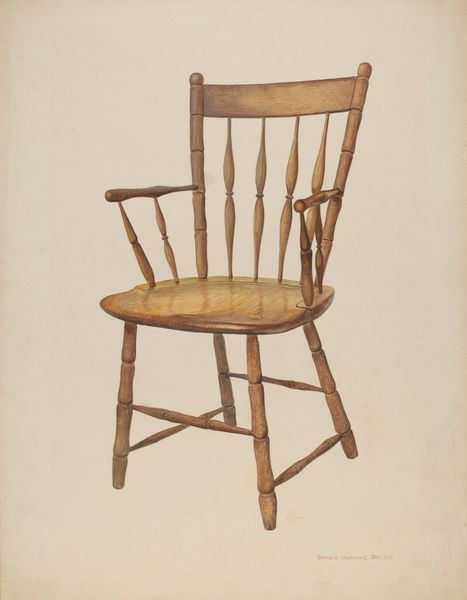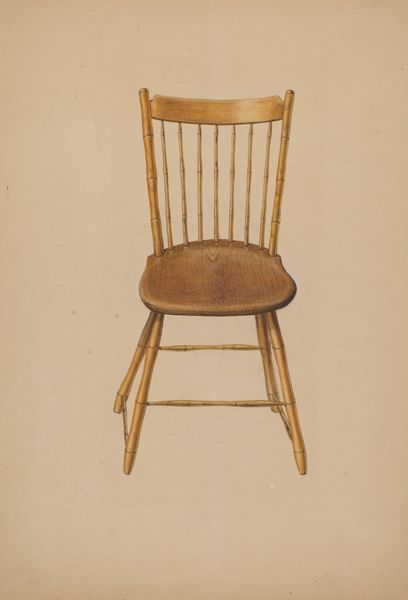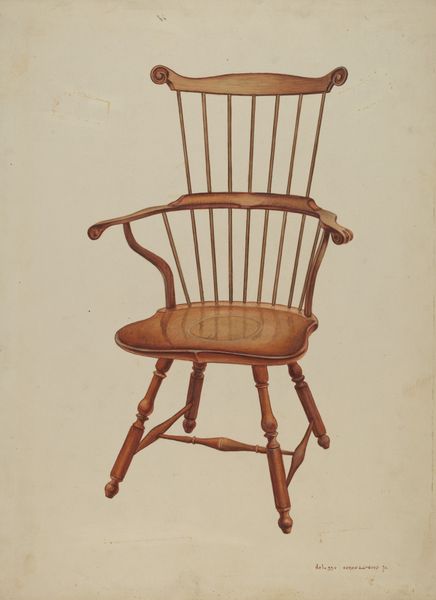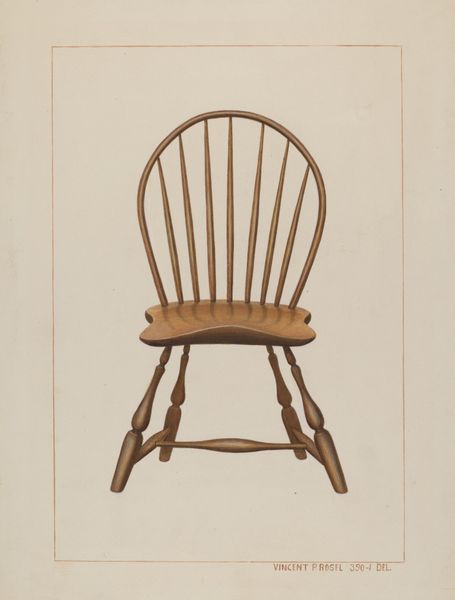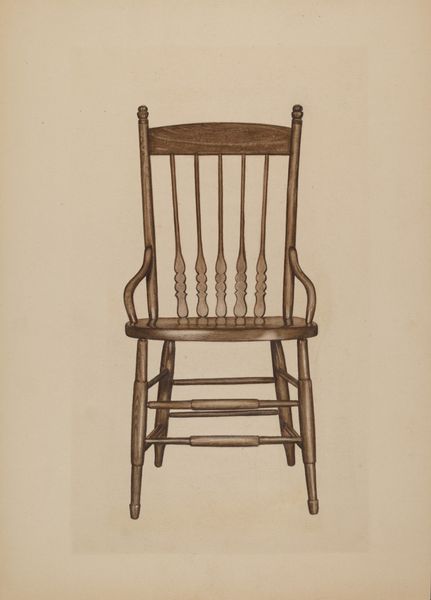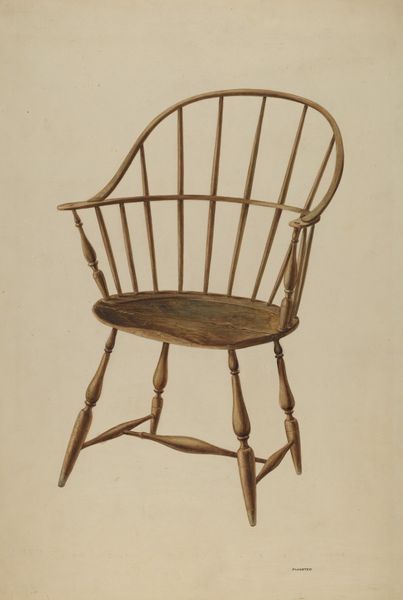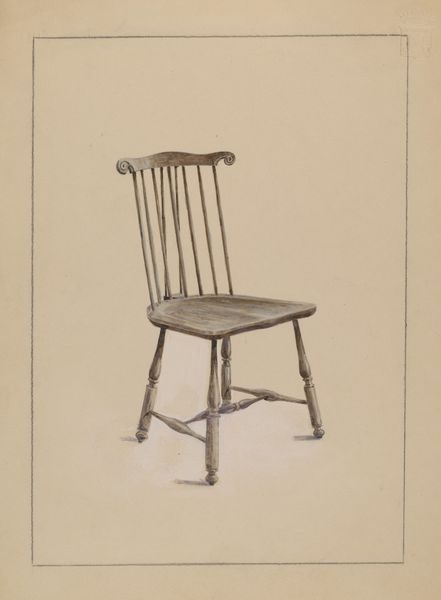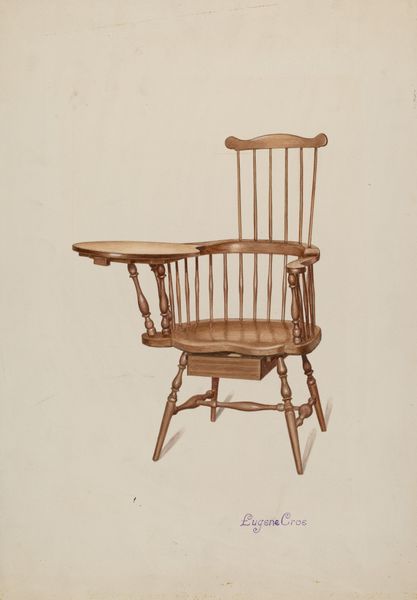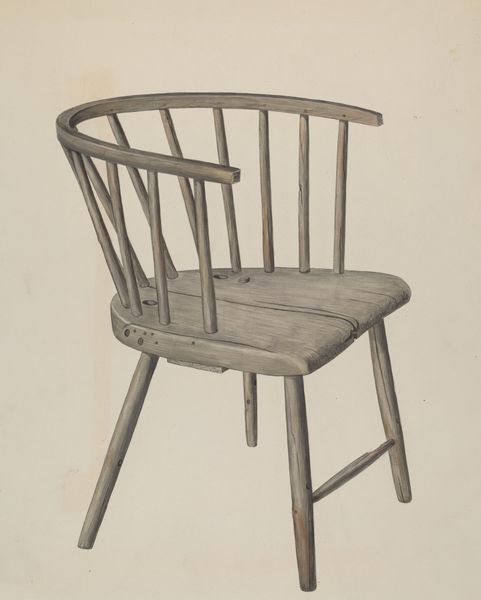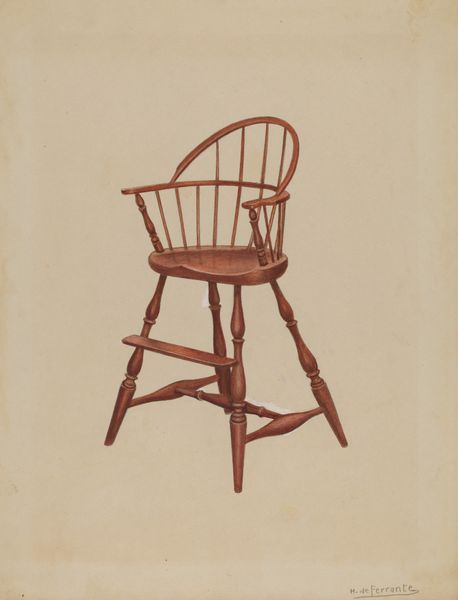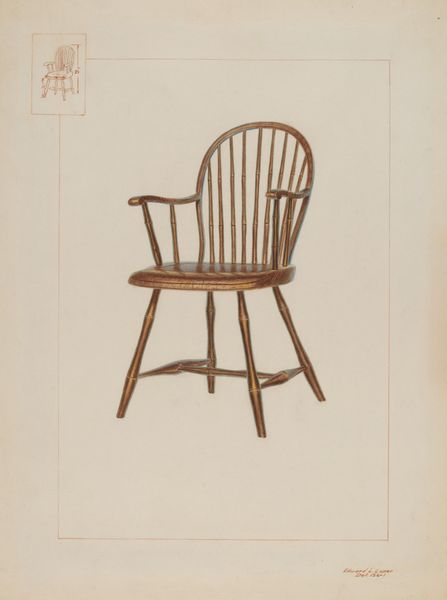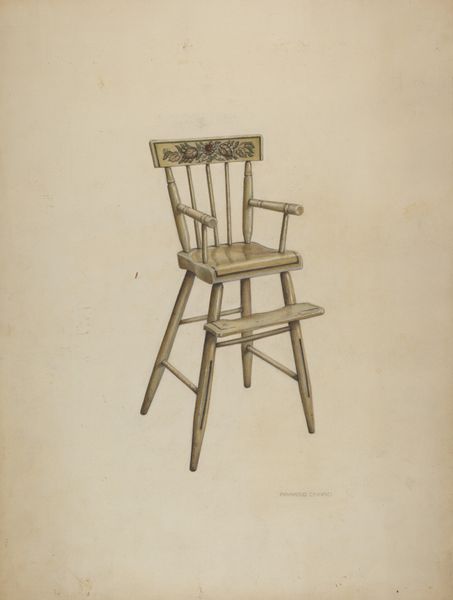
drawing
#
drawing
#
amateur sketch
#
toned paper
#
light pencil work
#
pencil sketch
#
charcoal drawing
#
possibly oil pastel
#
pencil drawing
#
underpainting
#
watercolour illustration
#
watercolor
Dimensions: overall: 34.9 x 24.2 cm (13 3/4 x 9 1/2 in.) Original IAD Object: 35 1/2"high, width of bk, 20 3/4". Seat: 17"wide x 16 1/4"deep
Copyright: National Gallery of Art: CC0 1.0
Curator: This is Eugene Croe’s "Windsor Chair," dating to about 1936. I’d say it's executed in watercolour or perhaps oil pastel, likely on toned paper, offering a muted, almost nostalgic feel. What catches your eye? Editor: My first thought is how remarkably unassuming it is. It feels… vulnerable, somehow. The chair itself is so ordinary, yet there’s this quiet dignity to it, isolated on the page. It gives me an intense desire to just…sit. Curator: I think you’ve nailed it. Windsor chairs, historically, are deeply democratic objects. They speak of utility, of everyday life. But Croe's choice to isolate it elevates it to something more. The chair becomes symbolic, not just of sitting, but of rest, of contemplation. Do you notice the watercolor bleeding almost as if tears on the paper? It feels very intentional, like the artist pouring his emotions on this simple subject matter. Editor: Absolutely. And the negative space surrounding it—it's not emptiness, but a kind of expectant stillness. It's almost as if the chair is waiting. Waiting for someone to sit, for a story to begin. These chairs are deeply rooted in Anglo-American culture; what kind of archetype is activated by Croe, here? Curator: A fascinating question. It could be the archetype of the hearth, of home, perhaps tinged with a melancholy longing. It lacks adornment, that chair, and stands stripped to its essential form, that’s also emphasized by its centering, creating an impression that what is basic about us is beautiful. What kind of memory does a Windsor chair conjure in collective conscious, if any? Editor: I think for many, it echoes memories of childhood, of simpler times, perhaps of grandparents or historical re-enactments—places of connection, storytelling. But isolating it removes that immediate context, it asks what the primal function is of such memory. A solid base that connects past to the present, maybe. Curator: Right, and maybe it pushes us to appreciate beauty in the mundane. It suggests beauty lies not in embellishment but in the quiet form, a form functional and familiar. Croe offers us an invitation to sit, reflect, and find solace in the everyday. Editor: It's a humble icon of resilience and endurance; a visual reminder of what sustains us, rendered with delicate grace. Thank you.
Comments
No comments
Be the first to comment and join the conversation on the ultimate creative platform.
